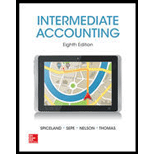
Concept explainers
Cash dividends: The amount of cash provided by a corporation out of its distributable profits to its shareholders as a return for the amount invested by them is referred as cash dividends.
Common stock: These are the ordinary shares that a
corporation issues to the investors in order to raise funds. In return, the investors receive a share of profit from the profits earned by the corporation. The dividend payments are not guaranteed and are paid after the payment made to the preferred stockholders.
Preferred stock: The stock that provides a fixed amount of return (dividend) to its stockholder before paying dividends to common stockholders is referred as preferred stock.
A preferred stock may be cumulative and non-cumulative. A cumulative preferred stock implies that a preferred stockholder is entitled to receive dividends for the current year plus any unpaid dividends of the previous years, before the dividends paid to the common stockholders.
To determine: The total dividends to be paid to preferred and common stockholders in each of the 3 years (Treat preferred stock as cumulative and non-participating stock).
Want to see the full answer?
Check out a sample textbook solution
Chapter 18 Solutions
INTERMEDIATE ACCOUNTING
- Beacon Manufacturing has $85,000 in assets. They also have $32,000 in liabilities and $8,500 in expenses, and they paid out $6,200 in dividends this year. The extended accounting equation is assets = liabilities + (revenue - (expenses + dividends)). What would their revenue need to be for their accounts to be in balance?arrow_forwardI need help with this General accounting question using the proper accounting approach.arrow_forwardI need help with this General accounting question using the proper accounting approach.arrow_forward
- I need guidance with this general accounting problem using the right accounting principles.arrow_forwardNext year, a business estimates that it will sell 30,000 units at a selling price of $15 per unit. Variable costs per unit are 40% of the selling price, and the business estimates that it will make a profit of $100,000. Calculate the fixed costs of the business for next year.arrow_forwardSolve this financial Accounting problemarrow_forward

 AccountingAccountingISBN:9781337272094Author:WARREN, Carl S., Reeve, James M., Duchac, Jonathan E.Publisher:Cengage Learning,
AccountingAccountingISBN:9781337272094Author:WARREN, Carl S., Reeve, James M., Duchac, Jonathan E.Publisher:Cengage Learning, Accounting Information SystemsAccountingISBN:9781337619202Author:Hall, James A.Publisher:Cengage Learning,
Accounting Information SystemsAccountingISBN:9781337619202Author:Hall, James A.Publisher:Cengage Learning, Horngren's Cost Accounting: A Managerial Emphasis...AccountingISBN:9780134475585Author:Srikant M. Datar, Madhav V. RajanPublisher:PEARSON
Horngren's Cost Accounting: A Managerial Emphasis...AccountingISBN:9780134475585Author:Srikant M. Datar, Madhav V. RajanPublisher:PEARSON Intermediate AccountingAccountingISBN:9781259722660Author:J. David Spiceland, Mark W. Nelson, Wayne M ThomasPublisher:McGraw-Hill Education
Intermediate AccountingAccountingISBN:9781259722660Author:J. David Spiceland, Mark W. Nelson, Wayne M ThomasPublisher:McGraw-Hill Education Financial and Managerial AccountingAccountingISBN:9781259726705Author:John J Wild, Ken W. Shaw, Barbara Chiappetta Fundamental Accounting PrinciplesPublisher:McGraw-Hill Education
Financial and Managerial AccountingAccountingISBN:9781259726705Author:John J Wild, Ken W. Shaw, Barbara Chiappetta Fundamental Accounting PrinciplesPublisher:McGraw-Hill Education





